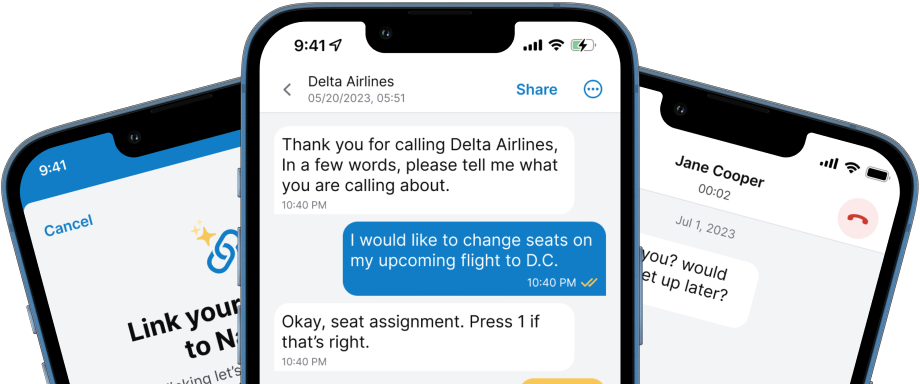Dinner Table Syndrome
Getting together with hearing and non-signing family members and friends for dinner can be difficult for deaf people. Learn about ‘Dinner Table Syndrome’!

The Holidays and DTS
With the festivities rapidly approaching over the next two months, we wanted to take this opportunity to discuss a common occurrence in the deaf experience - Dinner Table Syndrome. This tends to happen at almost any event; Thanksgiving, Hanukkah, Christmas, birthdays, networking events, restaurants, or at home.
What is ‘Dinner Table Syndrome’?
During gatherings, there are often multiple exchanges between family members, providing opportunities for rich conversations and opportunities for incidental learning. Deaf and hard-of-hearing individuals who live in hearing households often miss out on these exchanges. What often happens is they either:
- A) Frequently feel lost in the ongoing dialogue or
- B) They are wondering about what everybody is saying.
This experience, wherein deaf individuals are excluded from the flow of conversations at mealtime, is known as Dinner Table Syndrome. This is very common as 90% of deaf children are born to hearing parents and struggle to communicate with their immediate family.
While the dinner table serves as a symbol of family life and bonding, it often represents loneliness and inaccessibility to deaf people like myself. Imagine if something funny is said at the dinner table and everyone erupts in laughter, the deaf person will ask the closest person what was so funny and often get told, ‘Oh, it was nothing’ or ‘I’ll tell you later.’ They miss out on access to:
- Current news and events
- Recent family affairs
- Funny stories or jokes being told
Sometimes deaf people have to deal with bad lighting, loud background noise, and full mouths and they may not be in the mood to put in the work, excusing themselves from the discourse. They could stare at their food or a certain spot in the room. They are there, but not really there. The coping mechanism for deaf people at events like these is to disengage.
Speechreading can be challenging as family members tend to move back and forth between topics quickly, and with less contextual information for the deaf individual to work with, it is not always easy to catch on in time. The tendency among hearing people is to cut out and talk over one another, through no fault of their own.
The Effects of ‘Dinner Table Syndrome’
The feelings of isolation are painful and all too familiar to many in the deaf and hard-of-hearing communities. The deaf child or person can become stressed out, lonely, frustrated, angry, and left feeling unimportant. I know this because it has happened to me. I have dreaded the dinner table during family gatherings, choosing in lieu to:
- Sit and eat in the living room with the TV on
- To sit at the table and type/scroll on my phone underneath the table
- Eat as fast as I can so I can be excused and step away
- Bring along another deaf friend to spend time with me
My parents are fluent in sign language and so that being the case, they would often interpret for me at the dinner table, but even that gets exhausting after a while and they want to eat before the food becomes cold or be a full participant in the grown-up conversations themselves. It is not an intentional case of exclusion, it’s an unintentional case of exclusion. It is not common for hearing people to understand the stress the dinner table brings to a deaf or hard-of-hearing individual.
Tips to Beat ‘Dinner Table Syndrome’

Sometimes finding out what is best for the deaf person is the ultimate question to ask ahead of dinner or large meals together.
- Remind your family: sometimes they can forget to include you in the conversation or interpret what other people are saying.
- Consider your seating plan: if only two people at the table can sign, it can be useful for them to sit near each other (but opposite each other) so they can communicate easily.
- Consider lighting: ensuring the room has good lighting can help so the deaf or hard-of-hearing person can see everyone clearly, especially if they read lips.
- Eliminate distractions: oftentimes the fewer distractions at the table, the easier it is to communicate and not miss out on too much information.
- Tableside etiquette: avoid “sidebar” conversations and practice good turn-taking skills.
- Find a round table: this will make it easier for the deaf person to see who is speaking.
- Consider incorporating American Sign Language (ASL) into your family’s communication system.
Don’t Perpetuate ‘Dinner Table Syndrome’ by Saying this:
- “Oh, it’s not important.”
- “I’ll tell you later.”
- “Never mind.”
- “Oh, it was nothing.”
- "It’s not worth it.”
Oftentimes when the deaf child is promised to be filled in “later”, these moments never materialize.
With a better understanding of Dinner Table Syndrome, we can make all occasions, especially the holidays, inclusive and accessible for everyone. Wishing you a wonderful time during the upcoming holidays, from everyone at Nagish!





